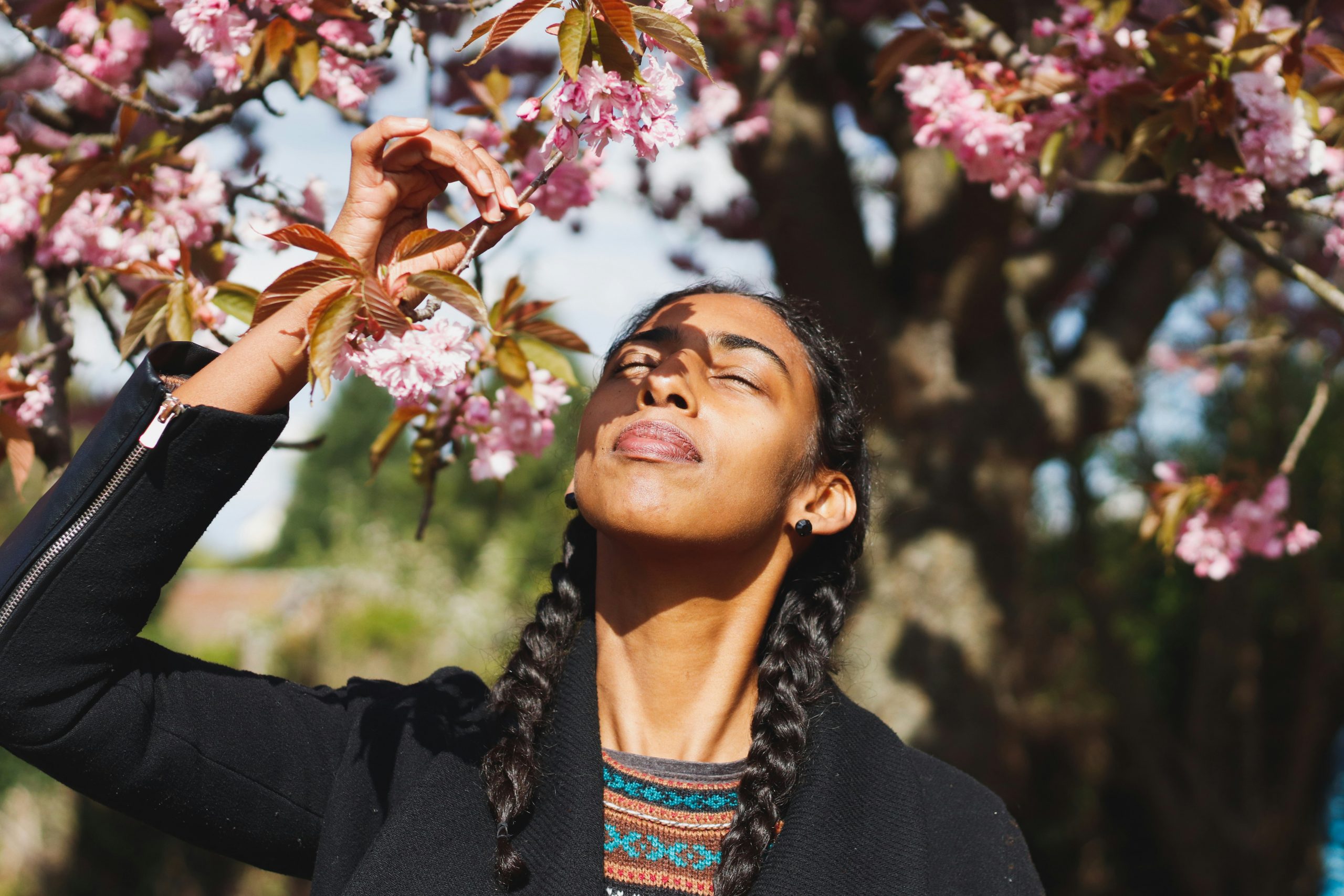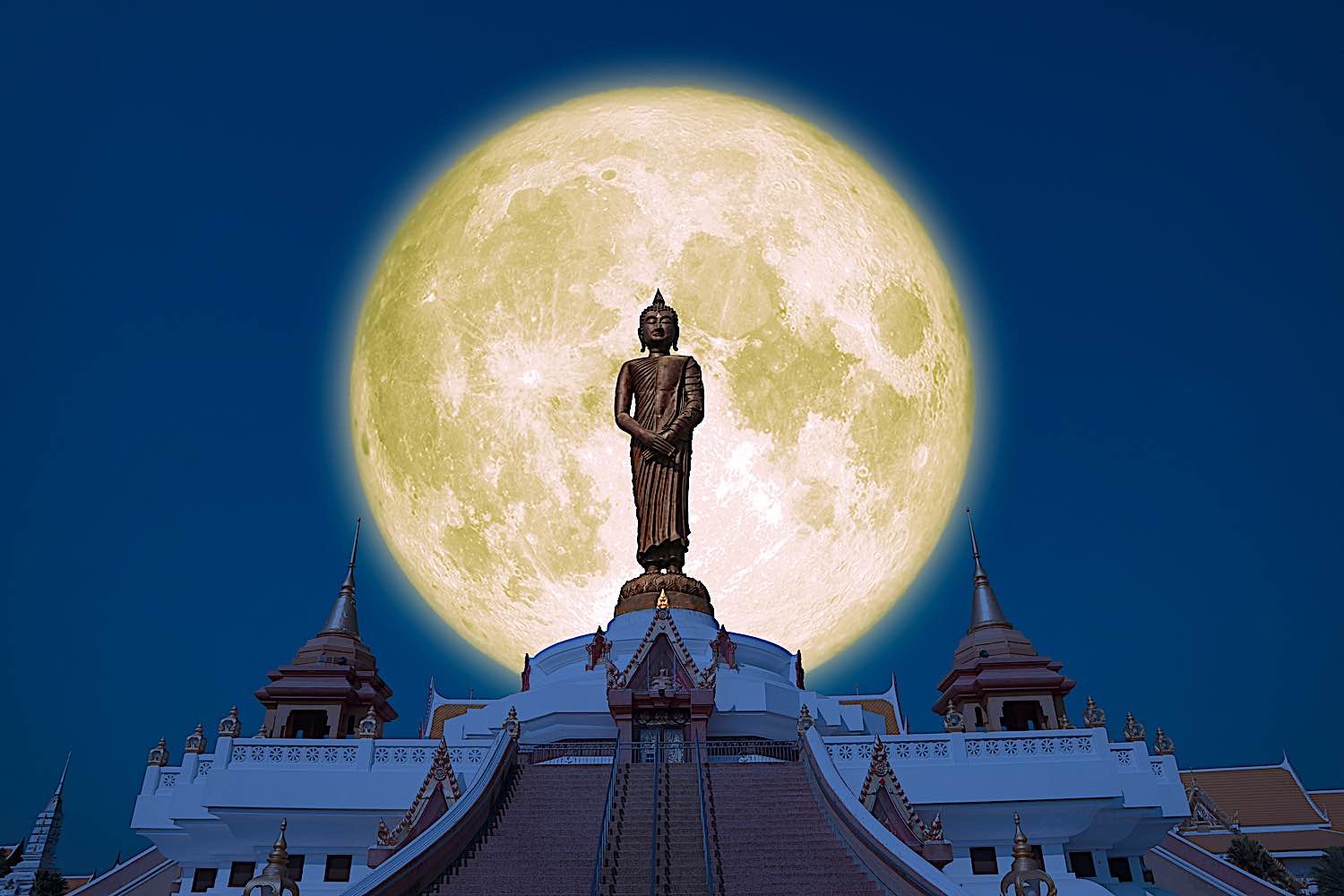Zen as a Way of Magical Realism
Awakening is always like finding a poem. The post Zen as a Way of Magical Realism appeared first on Tricycle: The Buddhist Review.

“Once upon a time Yangshan Huiji had a
dream. In it he traveled to Maitreya’s great
hall, where he was led up to the third seat.
As soon as he sat down a senior monk struck
the bell and announced, “Today the one sitting
in the third seat will preach.” Yangshan
immediately stood up, himself gave the bell
a strike, and then said, “The truth of the
great way is beyond the four propositions
and transcends the hundred negations.
Listen. Listen.”
— The Gateless Gate
You dig around in any religion that’s been around for a while, and it turns out a big part of its time is devoted to social cohesion. It’s a critical aspect of a culture. Religion reinforces obedience to the king or the republic or whatever stands as the center of the culture.
More sympathetically presented, and also true, this aspect of religion is about the glue to community. It is traditionally where the symbols and rites that tie people together happen. We can see among oppressed people, who find their religion is the thing that stands between them as a people and oblivion.
Buddhism when it came to China needed to show the emperor and court that it was useful to the state. If it didn’t there would be no Chinese Buddhism. And it conformed. Similarly, as Zen came to Japan it was critical to its acceptance that it found a useful place within society.
We’re currently at an interesting moment in the West when our religions are loosening their hold on us. It’s less important that the state, that the formal institutions of our culture, accept it. This time it’s all this decline and chaos that opens some very interesting doors.
Right now, we can open ourselves in ways where we can reengage our traditions.
I’ve seen three principally. One is doubling down. Here we see fundamentalisms of various stripes. The other is picking and choosing among the bones for useful bits. Often the word “secular” is attached to these attempts at salvaging practices. In Zen, for instance, meditation is tied to brain waves. And success is measured by stress reduction. But there is a third way. That way of rejecting literalisms of various sorts, but seeing the tradition has a lot to offer in regard to exploring the nature of the heart and the healing of the great hurt of our human condition.
A while back the BBC produced a wonderful six-part history of Christianity written and presented by the scholar, Diarmaid MacCulloch. I recommend it. In the first episode, Professor MacCulloch talked briefly about the Oriental Orthodox churches. These are ancient churches, that do not belong to the Eastern Orthodox community, that were generally held together by their relationship with the Patriarch of Constantinople.
In that first episode, he interviewed a professor from a seminary of the Syriac Orthodox Church. The professor opined how part of why things went so terribly wrong in the Latin church, by which he meant the Roman church and all the Protestant churches that broke away during the Reformation and the periods that followed, was that their theologians were all philosophers. As opposed to his church, he offered, where theologians were all poets and icon painters, artists of the heart.
I was so taken with that.
We are always in danger of being philosophers, when what we need are poets and artists. There’s a place for the philosophy of things. A very important place. But as we engage the matter of life and death, as we take up the Zen way, we’re being invited into the place of poetry.
Awakening is always like finding a poem. It touches and transforms.
We want things made concrete, once and for all. When, as it turns out, everything is wildly dynamic, composed of many instances coming together for an instant. And then reconfiguring in new ways. It is nearly impossible to capture such a thing in prose. Although we can get close. Yet, as the professor noted, poets and artists get even closer to the reality of things.
We have a terrible tendency to divide our lives between what we can touch and measure and what lives wild in our dreams. That gap is a terrible wound. Here I return to those phrases, “form is emptiness, and emptiness is form,” and “you are not it, but in truth it is you.”
We want things made concrete, once and for all. When, as it turns out, everything is wildly dynamic, composed of many instances coming together for an instant. And then reconfiguring in new ways.
As we live into our Zen lives, as we take up the practices and open ourselves to the mysterious unity of the many parts, things happen. We encounter disruptions of time and space, disruptions of our perceptions of reality. And with those eruptions we discover openings for us into new ways of being.
It’s a call into what I think of as magical realism. Or, if magical realism doesn’t work for you, perhaps following the Norwegian novelist and Nobel laureate, Jon Fosse, and call this mystical realism.
The French poet Paul Éluard, as translated by the Canadian Zen poet Peter Levitt, tells us “There is another world, and it is this one.” That. This. Here in that world, in this world of dream and icon painting, here we find the spiritual within religions.
For me, this is the great gift. What some call an “enchanted secular,” and others the “magical real.” Good terms. Such literary and artistic styles seem to come mighty close to what so many people have found on this mysterious path of life and intimacy, and which is the heart, as I’ve found it, of Zen’s gift.
It is the awakened view.
As a literary phenomenon, magical realism presents the world as clearly and accurately as possible. Realistically. But then there are left turns. Magical elements. The odd confusion between fantasy and reality. Hints of the supernatural, echoes of ancient magic. Just like with Zen.
Zen is mystical realism. Its magical realism is finding a larger view of the world. Yet, it realizes what we see and what we think are the tips of several icebergs. It doesn’t ignore the material. It embraces it with abandon. In each breath. With each touch. And there is a deep in that touch. A dazzling darkness in that seeing.
Zen, taken respectfully, taken with abandon and love, taken fully. Zen lived intimately is a way of magical realism. The truth of the poem.
If we want to touch reality, we need to allow reality to be. And what it presents as for human beings is a wonderful pageant, a tapestry, an icon. A poem. If we allow ourselves to be guided by religion as poetry, as something subtle and dynamic, as something to be experienced, then wonders await.
What is awakening? It is opening our senses, resting in the mystery, and finding the magical real.

 Fransebas
Fransebas 



























.jpg)
